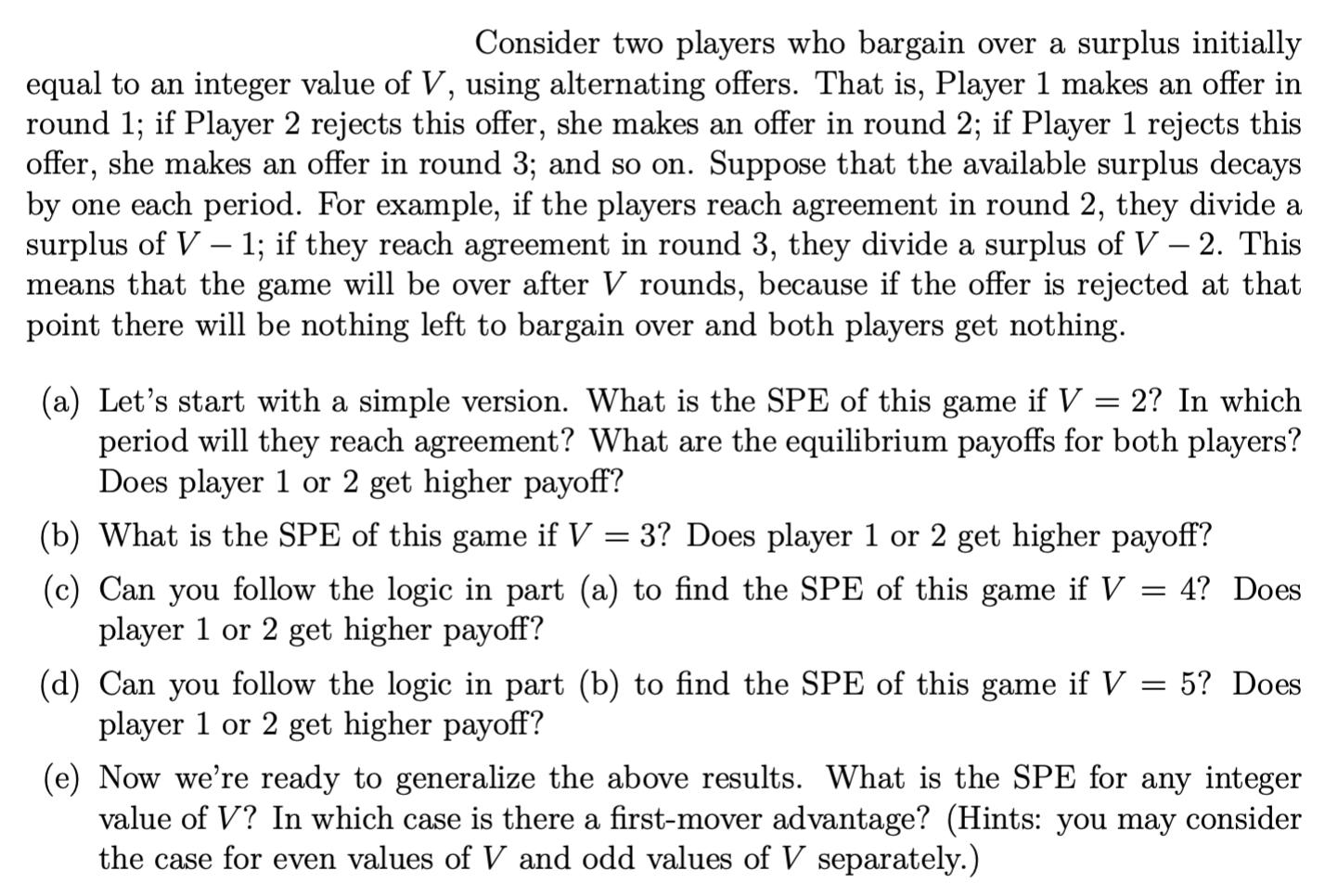Answered step by step
Verified Expert Solution
Question
1 Approved Answer
Consider two players who bargain over a surplus initially equal to an integer value of V, using alternating offers. That is, Player 1 makes

Consider two players who bargain over a surplus initially equal to an integer value of V, using alternating offers. That is, Player 1 makes an offer in round 1; if Player 2 rejects this offer, she makes an offer in round 2; if Player 1 rejects this offer, she makes an offer in round 3; and so on. Suppose that the available surplus decays by one each period. For example, if the players reach agreement in round 2, they divide a surplus of V - 1; if they reach agreement in round 3, they divide a surplus of V - 2. This means that the game will be over after V rounds, because if the offer is rejected at that point there will be nothing left to bargain over and both players get nothing. (a) Let's start with a simple version. What is the SPE of this game if V = 2? In which period will they reach agreement? What are the equilibrium payoffs for both players? Does player 1 or 2 get higher payoff? (b) What is the SPE of this game if V = 3? Does player 1 or 2 get higher payoff? (c) Can you follow the logic in part (a) to find the SPE of this game if V = 4? Does player 1 or 2 get higher payoff? (d) Can you follow the logic in part (b) to find the SPE of this game if V = 5? Does player 1 or 2 get higher payoff? (e) Now we're ready to generalize the above results. What is the SPE for any integer value of V? In which case is there a first-mover advantage? (Hints: you may consider the case for even values of V and odd values of V separately.)
Step by Step Solution
★★★★★
3.40 Rating (153 Votes )
There are 3 Steps involved in it
Step: 1
a SPE of the Game for V 2 In this case the surplus starts at V 2 and decreases by one each period Lets analyze the game Player 1 makes the first offer in round 1 Since the surplus is V 2 Player 1 can ...
Get Instant Access to Expert-Tailored Solutions
See step-by-step solutions with expert insights and AI powered tools for academic success
Step: 2

Step: 3

Ace Your Homework with AI
Get the answers you need in no time with our AI-driven, step-by-step assistance
Get Started


